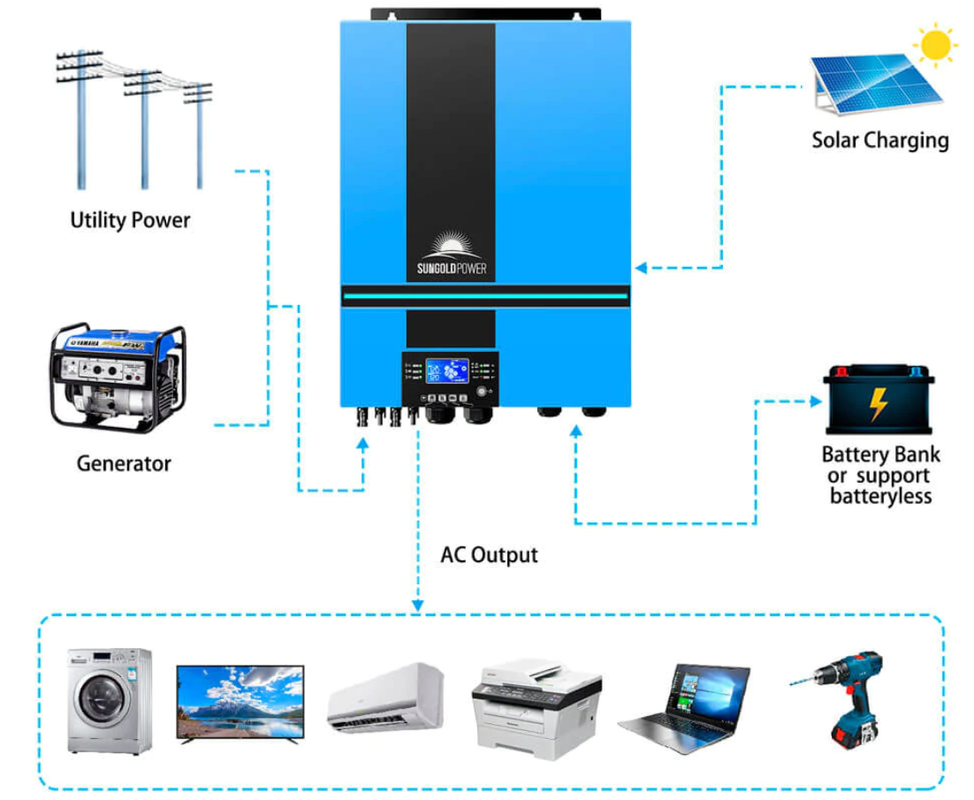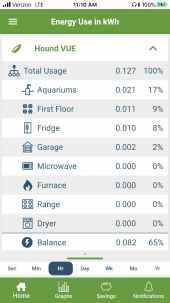Welcome to the Forum.
5kWh a day is not hard to deal with, that's basically what I use per day.
The quick way to know what you use "as is" now is by looking at your power bill and the Daily Average. Some companies provide a breakdown while with others you have to do the math.
The usual way: (once you know your usage), 5kWh in this case.
- Battery Sizing: How many days autonomy without any generation reserve do you want. Typically people choose 3 days, some more, depends on location & situation.
- Inverter Sizing to be able to deliver the required amount of VAC to run everything. The inverter has to be sized to deliver the maximum amount "demanded": by your appliances/devices. "Demanded" refers to not only running power but startup surges, such as a Fridge Motor or AC Compressor and such. 120VAC & 240VAC Inverters are available.
- Solar Controller sizing: Once we know how big of a battery system you need/want, then a Solar Charge Controller that has enough capability to charge the batteries within the sun hours available will need to be selected and then the Solar Panels to feed the SCC and provide enough to charge the battery bank.
Inverter Capacity Sizing:
Inverter take the DC from batteries and outputs the AC, Inverters can be anywhere from 85%-95% efficient, depending on the Quality level Tier-1 Like Victron, Solark are more efficient being TopTier product. NOTE: It is strongly suggested that no Inverter System pull/draw more than 250A from a battery bank, If more is required, stacked inverters and such come into play.
Quicky Simple Guide: not corrected for inefficiency. Not including surge capacity.
12V@250A=3000W (120VAC/20A - 240VAC/10A), 12V requires 4 Cells (4S)
24V@250A=6000W (120VAC/40A - 240VAC/20A), 24V requires 8 Cells (8S)
48V@250A=12,000W (120VAC/80A - 240VAC/40A), 48V requires 16 cells (16S)
Grid Tied or not ?
Grid Tied with inspections, permits, fees, randomly weird power co's and issues with tariffs... it's costly and actually slows the ROI (return on investment)
Grid Connected (not pushing power to grid, but can use grid to charge batteries & power home concurrently) This has become the most popular option gaining ground. No power Co interference (you are not pushing to them, so out of the loop) fewer permits and fees BUT battery bank cost etc added.
Off-Grid, no power co poles/wires no problem - Freedom !
LFP Battery DIY is not hard, can be cost effective but requires patience and calmness. Using a known good vendor & pricing I'll give you a couple of quick examples.
Every battery pack requires a BMS (Battery Management System), a Fuse/Breaker, Battery Terminals, A Case/Frame.
For average example: BMS costs Vary a lot, so we'll say $250, Fuse & terminals $60 case/frame ----
EVE-280AH
Matched cells. $125ea. SOURCE (Known Good Reliable Vendor -
LUYUAN TECH) NB Showing Matched & Bulk cells.
12V/280AH/3,584Wh or 3.58kWh -- 4 cells $500 + $310 = $810.00 ( 310 = BMS 250 + Fuse & Terminals $60)
24V/280AH/7,168Wh or 7.1kWh -- 8 cells $1000 + 310 = 1310
48V/280AH/14,336 or 14.3kWh -- 16 cells $2000 + 310 = 2300
How to Assemble and setup info here:
This document was posted to the forum by Amy from Shenzhen Luyuan and written by Steve S. It was meant to be posted as a resource. Below is her description of the resource: Dear all friends in the forum, This file in the attachment was...

diysolarforum.com
MONEY, Time & Stress Savers !
Simply put there are TWO ways to attack the solar systems (more but two most common)
The"traditional" method uses an independent SCC (Solar Charge Controller) to manage the solar panels & charge the batteries. Then a separate Inverter/Charger to converter the DC Battery power to AC and to use AC IN to charge the batteries if/when required.
The new AIO (All-In-One) Integrated systems which contain the SCC, Inverter, Charger in one "box" but are modular within for service/repair/upgrade if required. These simplify a LOT of hassle and wipe out some BOS (Balance of System) devices and is much easier to setup & install...
Micro-Inverters and such are mostly oriented towards grid-tied installations, can be used without grid but that is quite another beast to work with.
Will's AIO Video Playlist
Will's AIO blueprints on the main website:
MPP and a few other manufacturers now sell a "complete off grid system in a box" that has: AC Inverter Solar Charge Controller AC Battery Charger Automatic Transfer Switch (if grid power is...
www.mobile-solarpower.com
! MOST IMPORTANT ADVICE !
1) Do diligent research with critical thinking applied.
2) DO NOT BUY ANYTHING until you have a PLAN. Failure to Plan is a Plan to Fail ! and it is costly !!
3) There is NO SUCH THING as a Once in Lifetime Deal ! IF it sounds too good to be true IT IS don't question that !
4) When budgeting your project, once you have a "Final" $ Figure including all the little bits, odds & sods, ADD a 25% buffer to prevent heart attacks.
5) A BIGGY which is a Gotcha for about 70% of folks... Underestimating their needs... Things change, shit happens, we buy more junk or have kids etc... Happens to all of us, planned or not, life just does that.... Everyone by their inherent nature thinks they are more conservative than they actually are, especially folks new to solar, because they still have the thinking that "I'll just turn this on, without a 2nd thought". I generally recommend that once you have this sorted, go one step up in capacity & storage to future-proof self. Many don't like this and refuse to do it, then 1-2 years later they're grumbling while upgrading. Seen this TOO MANY TIMES. At minimum the Base Foundation like battery packs, battery cables and such should always be one grade above, which also cover overshoots that happen occasionally (ie you have a big party & use 2x or 3x more energy that day than normal)... or your using extra power tools because you have a project to do... happens a lot BTW.
ONE RULE that will always be TRUE !
It is far cheaper to Conserve Energy than it is to Generate it and Store it ! Eliminate the Energy Pigs and replace them with efficient and clean appliances / devices. That Fridge you inherited from Grandma may look cool but it's sucking your wallet. That old Hot Water Tank is like having your car sitting on the driveway running All Day Long just because you may want a 5-minute drive to the corner store... On-Demand Hot Water heating and Even On-Demand coupled of Solar Water heating can save a HUGE Pile of energy and subsequently cash. That electric Coil Stove is a Gnarly beast draining your power too.... an Induction Cooktop and infra-convection Oven are super-efficient and microwaves are always good. Well pumps with SoftStart that ramp up saves on surge hits and use much less power as well... You would be shocked if you knew how inefficient a lot of consumer products are, especially the older stuff when power use was no concern.
Hope it helps, Good Luck.






